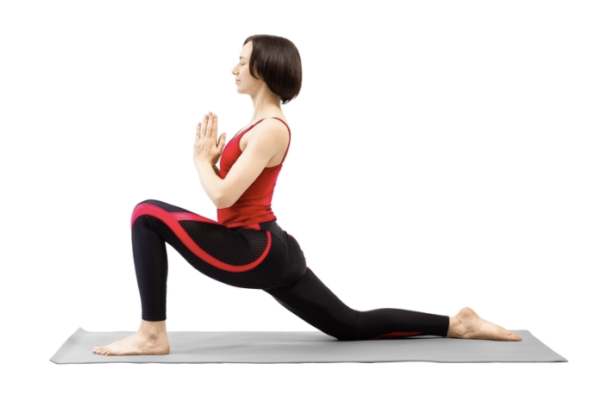Why are hip mobility exercises important for athletic people? 5 options for when they should be done
When we think of fitness, we often picture toned muscles, lean stomachs, and a chiseled jawline. Rarely do we include mobility when considering fitness. Everyone in the fitness world knows that stretching is important, but did you know that mobility exercises are even more valuable to your fitness routine?
Mobility often gets confused with flexibility and though they are similar with the terms often being used interchangeably, they are certainly not the same thing. Mobility exercises combine flexibility and strength thereby increasing your range of motion and improving stabilization.
Hip mobility is one of the most important areas that you should be concerned about regarding your physical health as the hip joint is the foundation for the major muscle groups of the lower body which include the glutes, quadriceps, and hamstrings.
Some of the most common hip mobility exercises include:
- Lying Hip Rotations
- Hamstring and Hip Opener
- Hip Circles
- Piriformis Stretch
- The Butterfly
- Frog Stretch
- Kneeling Lunge
- Squatting Internal Rotations
Here are five indicators that you might benefit from incorporating hip mobility exercises into your fitness routine.
You Lack Flexibility, Strength, and Stability
Whether you’re a beginner or an advanced athlete, it’s important to incorporate mobility movements into your workout routine. Mobility is not just important for your overall health. It’s a vital aspect of fitness with the potential to propel your fitness goals even further than you might think possible.
Incorporating mobility exercises into your fitness routine enables your body to activate more muscles, therefore, allowing you to have complete control over your range of motion. Mobility exercises steadily expand your range of motion and allow you to get more out of your workout than you would have otherwise.
Hip mobility in particular is one of the more vital areas you should be focusing on due to the fact that most of us spend many hours sitting each day. This can result in painful cramping in the hip muscles and joints caused by tightening or shortening of the muscles. This can affect more than just your workouts. We need good mobility in our hips to do many of the normal daily tasks like walking up or down stairs and going to the restroom.
Your Range of Motion Leaves Something to be Desired
Have you ever experienced a plateau in your workouts? Like, maybe you are just not able to increase the weight on a particular exercise like barbell squats without losing proper form. This is a major indication that you need to be doing more hip mobility exercises.
Tight hip flexors are one of the most common pain points for the average American due to the fact that many of us only devote an average of 3 hours every day to physical activity. The most common complaints of tight hip flexors include poor posture, increased anxiety, heightened risk of injury, and anterior pelvic tilt.
Fortunately, a proper range of motion can be reestablished with the implementation and regular use of hip mobility exercises. Another wonderful thing about mobility movements is that they do not need to be done at the gym unless you wish to do so. This means you can do many of them right at your desk or if you work in an office, during your lunch period.
You’re Experiencing Pain and Tightness
Are your knees constantly giving you grief? Does your lower back hurt even though you haven’t done anything in particular to injure it? Well, the origin of that pain might not be coming directly from your knee or back. Believe it or not, tight hip flexors are one of the most common reasons for lower back pain as well as knee pain provided you do not have a previous injury or underlying issues in either of those areas.
When you have a lack of mobility in the hip flexors the body finds ways to compensate for this in order to keep you moving. This can mean increased movement in your knees or back which can exert undo stress on those areas and cause pain. The best way to fix this is to begin incorporating hip mobility exercises into your daily routine and stay consistent with them.
You are Injury Prone
Lack of mobility during your exercises is a big problem. As we know, proper form is absolutely vital in any given exercise and without it, you risk terrible injury and possibly a lengthy recovery. If you have a limited range of motion and are unable to perform a weighted exercise appropriately, your support muscles will have to pick up the slack. This can lead to injury as they are typically smaller and weaker and cannot handle the excessive overload.
On top of that, if you are not able to perform the full range of motion and are not engaging the main muscle you will not be achieving any progress with muscle growth intended for that particular exercise. Even if you’ve been working out for a long time, you should be incorporating mobility exercises into your fitness routine.
You Have a Desk Job
A person’s mobility tends to decrease quite a bit over long periods of sitting due in part to advances in technology. Many of us these days spend too much of our time in front of a computer screen. From work to recreational games, a sedentary lifestyle has become the norm for many people around the world.
Sitting for hours at a time typically leads to bad posture which then leads to tight hip flexors. When you have tight hip flexors, this can cause the glute muscles to lengthen and overwork themselves leading to lower back pain. If the problem persists, it can eventually lead to reduced mobility overall.
There are many different mobility exercises that can be done right at your desk which can prevent loss of mobility and pain associated with muscle imbalance. Even just standing up every so often and taking a quick walk can make a difference in mobility. If possible, it is recommended to do mobility exercises every day.
To summarize
if you are experiencing a lack of flexibility, strength, stability, or range of motion in your exercises this is likely a strong indication that you should begin incorporating hip mobility exercises into your fitness routine. Additionally, pain and tightness in your hips, back, or knees can be corrected with consistent mobility exercises every day as well as prevent injury.
If you have a desk job, you should be doing hip mobility exercises even if you do not exercise regularly as this can lead to overcompensation of the glute muscles and result in lower back pain along with the possibility of reduced mobility overall.




















